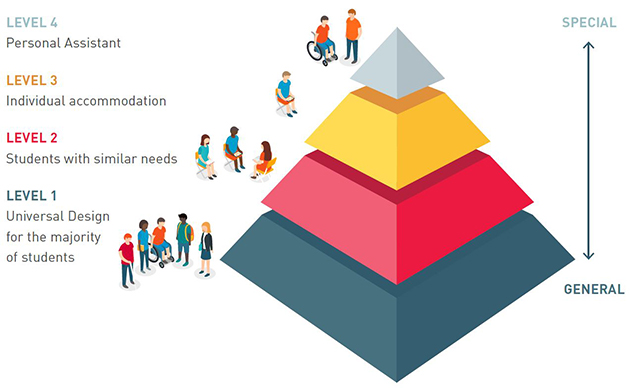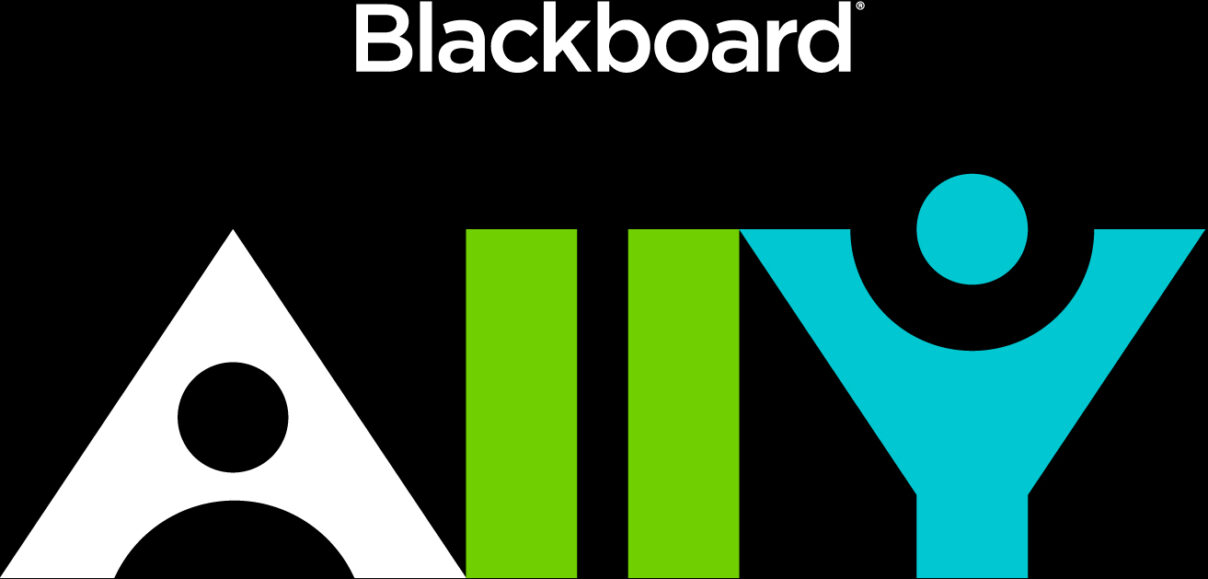Accessible Digital Content: Tools and Strategies
Why Accessibility Matters

Accessible content benefits all students, not just those with disabilities. The principles of Universal Design for Learning (UDL) emphasise providing multiple means of engagement, representation, and expression to meet the diverse needs of learners (CAST, 2018). UDL encourages the creation of flexible learning environments where students can choose how they engage with materials, which improves overall learning outcomes. For example, providing alternative formats (such as audio or HTML) supports students with visual impairments and those who prefer to listen to content on the go. Clear navigation and structured content also benefit students whose first language is not English and those with cognitive processing difficulties. In the context of UDL, it’s useful to think about accessibility as a pyramid: foundational adjustments (e.g., clear headings, alternative text) support all learners, while more targeted adaptations benefit those with specific needs. The UDL pyramid model from AHEAD illustrates this tiered approach effectively.
The Legal Context
Accessibility requirements for Higher Education Institutions (HEIs) are underpinned by the Public Sector Bodies (Websites and Mobile Applications) Accessibility Regulations 2018 (PSBAR), which mandate that digital content meets Web Content Accessibility Guidelines WCAG 2.1 AA standards. Institutions must ensure that course content is perceivable, operable, understandable, and robust for all students. Failure to comply can result in legal consequences, including fines and reputational damage. The upcoming European Accessibility Act (June 2025) will broaden the scope of these requirements, placing greater emphasis on accessible digital platforms, e-books, and multimedia content. Ensuring compliance is not just about avoiding penalties, it’s also about fostering an inclusive learning environment where all students have equal access to knowledge.
Improving Accessibility with Ally
Blackboard Ally, integrated into Durham’s VLE system Blackboard, is a powerful tool for identifying and improving the accessibility of course materials. When an instructor uploads content, Ally automatically assesses its accessibility and generates a colour-coded score:
- Green – Accessible
- Amber – Issues present but not critical
- Red – Significant accessibility issues

Ally provides detailed feedback and step-by-step suggestions for improving the accessibility of content. For example, it can highlight missing alternative text for images, incorrect heading structures, or poor colour contrast. Additionally, Ally generates alternative formats, such as audio, HTML, and electronic Braille, which allow students to engage with content in ways that suit their learning preferences.
Ally’s course-level reports allow staff to see how well their content is performing from an accessibility standpoint. Ally institutional reports may also be requested (by Head of Department) from DCAD to highlight valuable insights into accessibility trends and areas for improvement across a department. These reports help identify common issues and track progress over time, making it easier for departments to focus their efforts where they are most needed. For more detailed guidance on using Ally, staff can refer to the Blackboard Ally help page on the DCAD help site.
Ally importantly also includes a student-facing feature that allows learners to select the format that works best for them. If a student prefers to listen to a lecture slide rather than read it, they can generate an audio version directly through Ally. Assistance for students on how to use and get the best out of Ally is available on the Accessible Functionality in Blackboard student help page on the DCAD help site.
It’s worth noting that Global Accessibility Awareness Day (GAAD) takes place annually in May. This year (2025) it’s on 15th May. It provides an excellent opportunity for staff to engage with training and updates on best practices for improving digital accessibility. For more details, visit the Global Accessibility Awareness Day site.
Accessible Maths with Chirun
Mathematical content presents unique challenges for accessibility due to its visual and structural complexity. The Chirun tool converts LaTeX-based mathematical content into accessible HTML formats, ensuring that equations and formulae can be read accurately by screen readers. Chirun allows staff to create structured, accessible maths content without compromising accuracy or presentation quality.
The Science Digital Education team is working with staff from DCAD to reach out to departments and commence the larger-scale conversion of existing LaTeX-generated content into more accessible HTML outputs via Chirun. We are working with Engineering and Physics initially, and will then explore ways to expand Chirun’s use across other departments and subject areas. The goal is to make maths-based assessments and course content equally accessible to all students, including those who rely on screen readers or other assistive technologies.
Next Steps and Recommendations
If you are interested in taking steps to improve the accessibility of your course materials, here are some suggestions about what to do next:
- Consider Accessibility at the Design Stage – Embedding accessibility early in course design ensures a smoother learning experience for all students and reduces the need for last-minute adjustments. Please contact us if you are looking to plan a course or programme of study to ensure you plan accessibility in right from the start.
- Review Ally reports – Academic staff should regularly check their course accessibility scores and address flagged issues using Ally’s built-in guidance.
- Make Maths Accessible – Contact us to explore how Chirun can support accessible delivery of technical content, particularly equation-heavy materials.
- Leverage GAAD – Encourage staff to participate in events and training around Global Accessibility Awareness Day on 15th May 2025 to stay informed on the latest developments.
- Find out more about the forthcoming European Accessibility Act (2025) by signing up to the free AbilityNet webinar on 30th April 2025, Are you ready for the European Accessibility Act?.
References
- CAST (2018). Universal Design for Learning Guidelines.
- Burgstahler, S. (2020). Creating Inclusive Learning Opportunities in Higher Education: A Universal Design Toolkit. Harvard Education Press.
- Seale, J. (2014). E-learning and Disability in Higher Education: Accessibility Research and Practice. Routledge.
- Fichten, C., Asuncion, J., & Scapin, R. (2014). Accessibility of e-learning and computer and information technologies for students with visual impairments in postsecondary education. Journal of Visual Impairment & Blindness, 108(2), 111–123.
